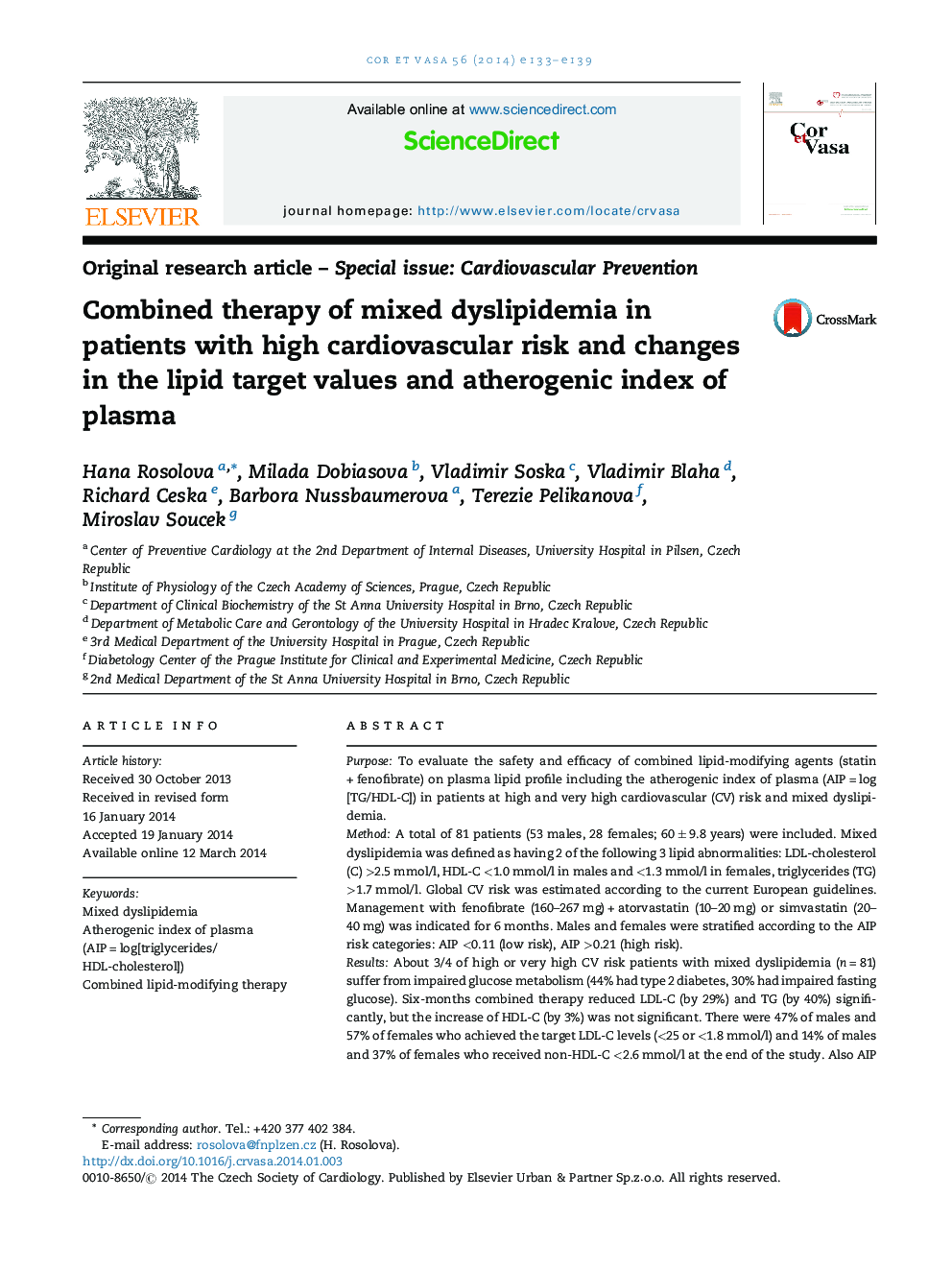| کد مقاله | کد نشریه | سال انتشار | مقاله انگلیسی | نسخه تمام متن |
|---|---|---|---|---|
| 5880319 | 1147557 | 2014 | 7 صفحه PDF | دانلود رایگان |
PurposeTo evaluate the safety and efficacy of combined lipid-modifying agents (statin + fenofibrate) on plasma lipid profile including the atherogenic index of plasma (AIP = log[TG/HDL-C]) in patients at high and very high cardiovascular (CV) risk and mixed dyslipidemia.MethodA total of 81 patients (53 males, 28 females; 60 ± 9.8 years) were included. Mixed dyslipidemia was defined as having 2 of the following 3 lipid abnormalities: LDL-cholesterol (C) >2.5 mmol/l, HDL-C <1.0 mmol/l in males and <1.3 mmol/l in females, triglycerides (TG) >1.7 mmol/l. Global CV risk was estimated according to the current European guidelines. Management with fenofibrate (160-267 mg) + atorvastatin (10-20 mg) or simvastatin (20-40 mg) was indicated for 6 months. Males and females were stratified according to the AIP risk categories: AIP <0.11 (low risk), AIP >0.21 (high risk).ResultsAbout 3/4 of high or very high CV risk patients with mixed dyslipidemia (n = 81) suffer from impaired glucose metabolism (44% had type 2 diabetes, 30% had impaired fasting glucose). Six-months combined therapy reduced LDL-C (by 29%) and TG (by 40%) significantly, but the increase of HDL-C (by 3%) was not significant. There were 47% of males and 57% of females who achieved the target LDL-C levels (<25 or <1.8 mmol/l) and 14% of males and 37% of females who received non-HDL-C <2.6 mmol/l at the end of the study. Also AIP was decreased significantly in majority of the patients (high risk AIP decreased from 87% to 47% of males and from 71% to 25% of females).ConclusionThe combined lipid-modifying therapy led to a significant improvement of the plasma lipid profile, particularly of LDL-C, TG, non-HDL-C and AIP. Atherogenic index of plasma seems to be a very useful marker of CV risk in high and very high CV risk patients with mixed dyslipidemia and glucose abnormalities. More intensive management is needed in those patients.
Journal: Cor et Vasa - Volume 56, Issue 2, April 2014, Pages e133-e139
